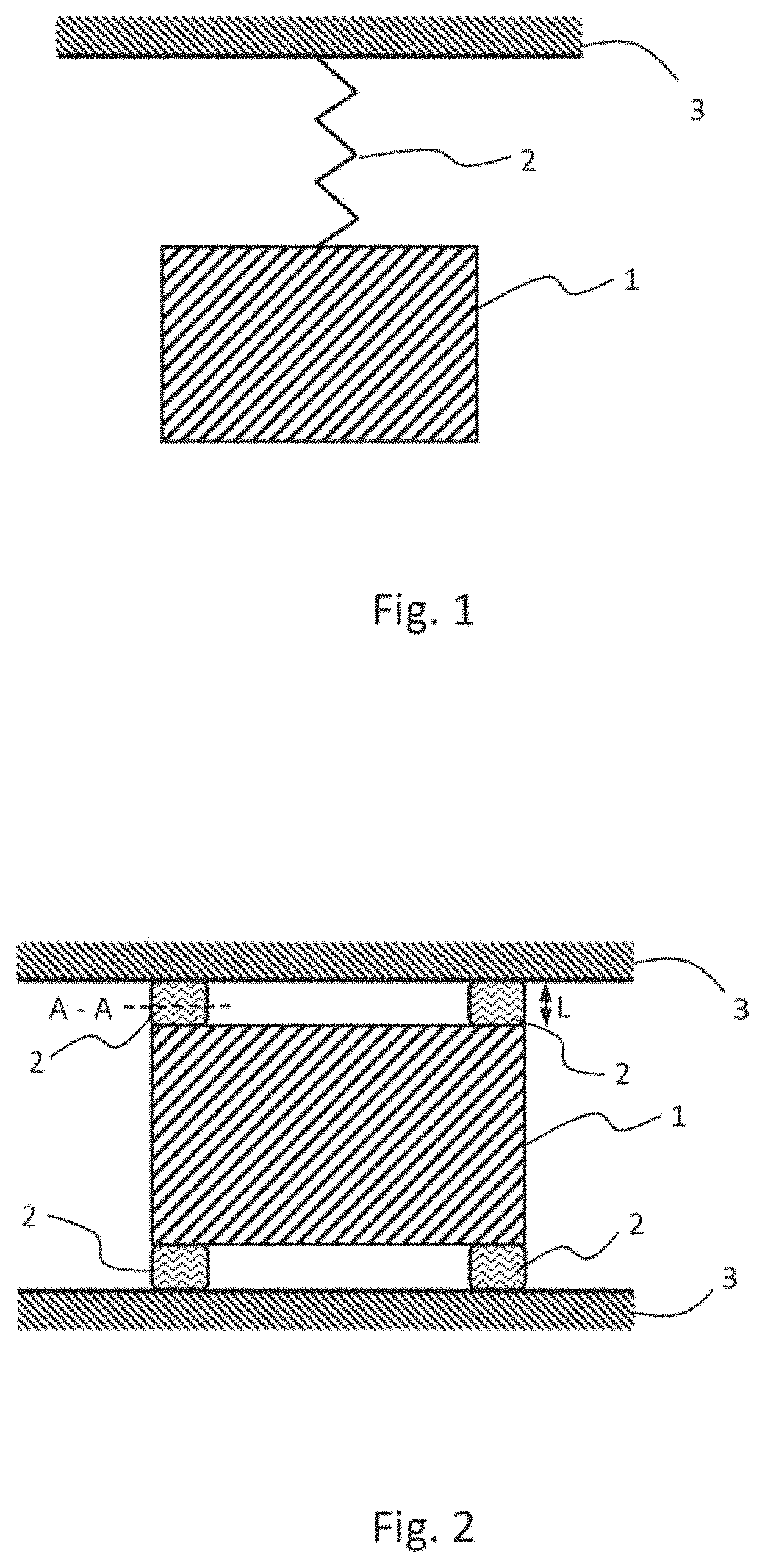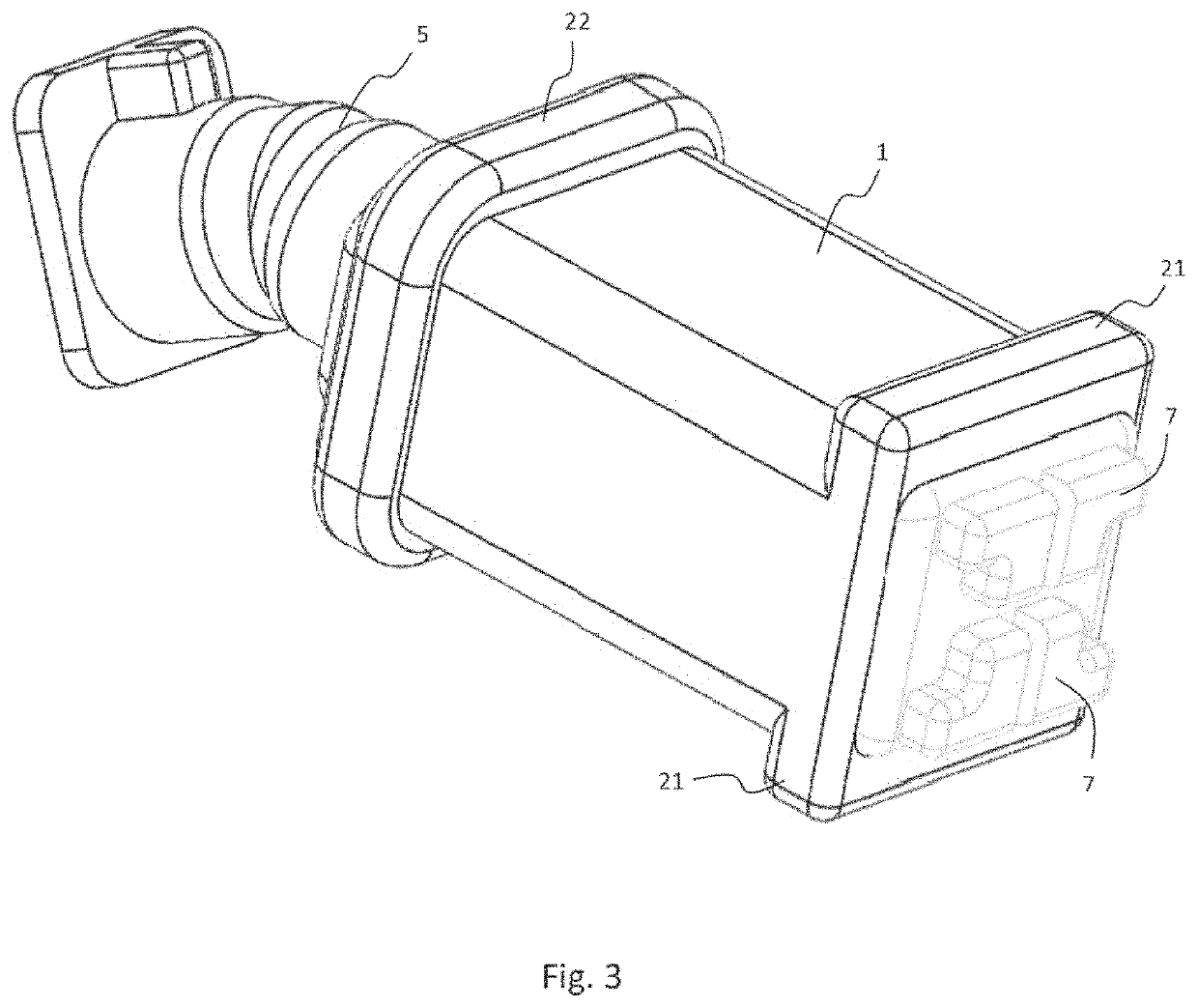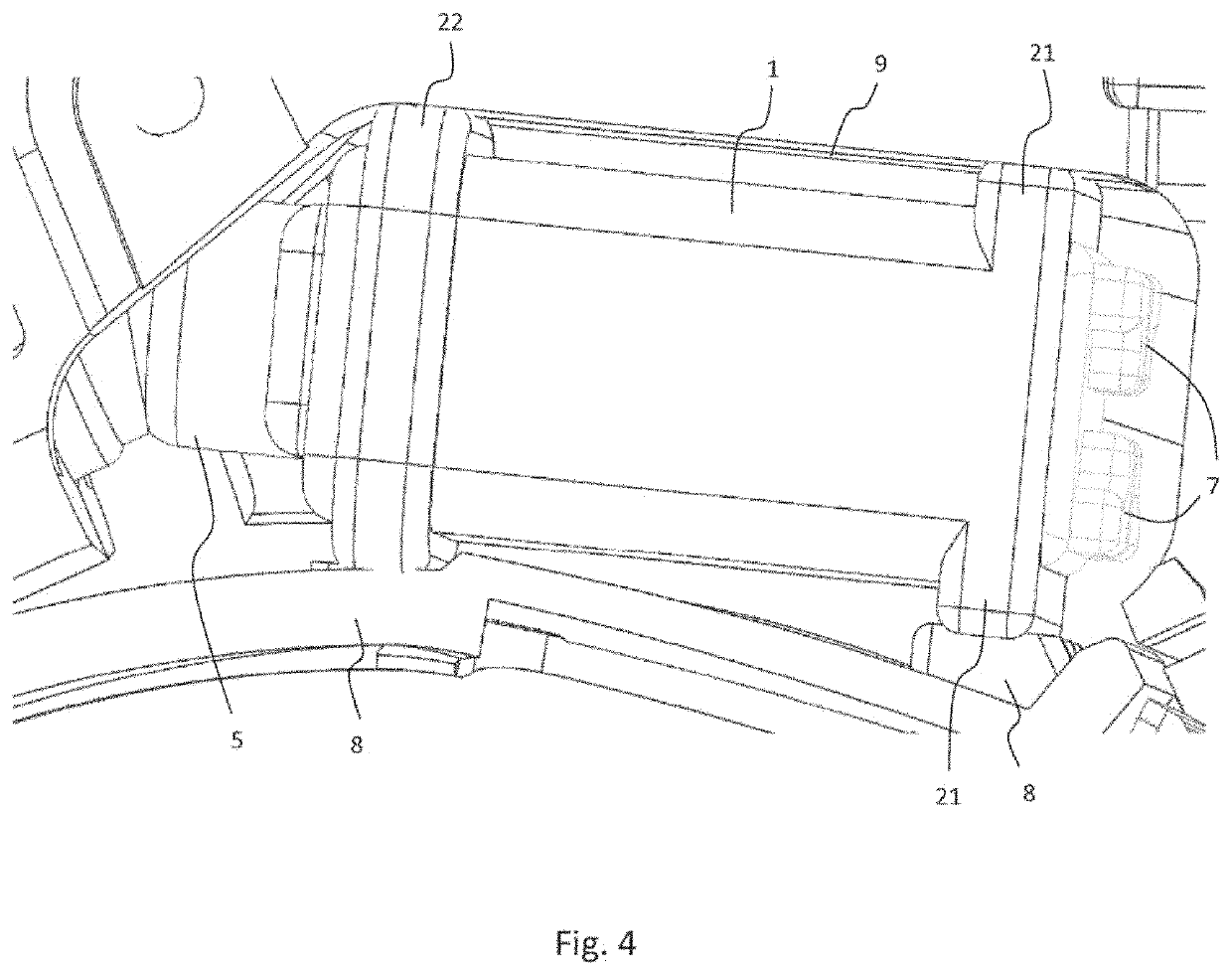Receiver suspension for a hearing assisting device
a technology for hearing aides and receivers, applied in the direction of hearing aids mounting/interconnection, transducer details, electrical transducers, etc., can solve the problems of increasing the risk of receiver failure, and increasing the size of the hearing aide device on the floor, so as to improve reliability, stable position of the receiver, and good stability of the receiver's position
- Summary
- Abstract
- Description
- Claims
- Application Information
AI Technical Summary
Benefits of technology
Problems solved by technology
Method used
Image
Examples
Embodiment Construction
[0025]FIG. 1 shows a model of a suspended receiver 1 connected through a suspension 2 to a fixture 3. The fixture 3 could be the housing of the hearing assisting device or a structure connected to the housing. The suspension 2 is often made from a resilient material such as a rubber or a rubber like material, e.g. a silicone or butyl. The suspension 2 is in practice arranged as a number of ridges or fins extending from the receiver 1 to the fixture 3.
[0026]The stiffness S of the suspension can be found by
[0027]S=EAL(1)
where E is the modulus of elasticity for the suspension material, A is the total cross-sectional area for the ridges or fins suspending the receiver. L is the height of the ridges.
[0028]FIG. 2 shows a practical example of the suspension, where the suspension comprises four ridges 2 squeezed between the fixture 3 and the receiver 1. The ridges hold on to the receiver by a combination of compression and surface friction. On one of the ridges (the upper left) the plane A...
PUM
 Login to View More
Login to View More Abstract
Description
Claims
Application Information
 Login to View More
Login to View More - R&D
- Intellectual Property
- Life Sciences
- Materials
- Tech Scout
- Unparalleled Data Quality
- Higher Quality Content
- 60% Fewer Hallucinations
Browse by: Latest US Patents, China's latest patents, Technical Efficacy Thesaurus, Application Domain, Technology Topic, Popular Technical Reports.
© 2025 PatSnap. All rights reserved.Legal|Privacy policy|Modern Slavery Act Transparency Statement|Sitemap|About US| Contact US: help@patsnap.com



